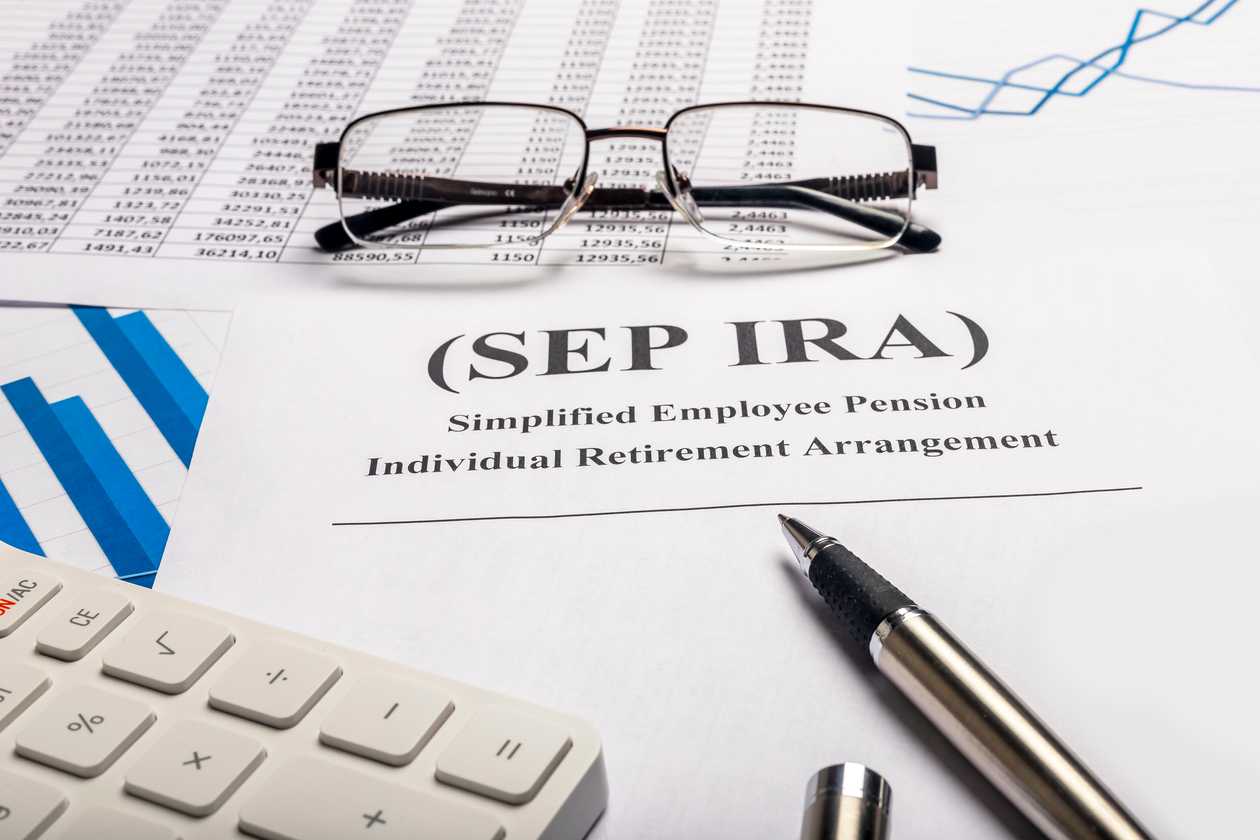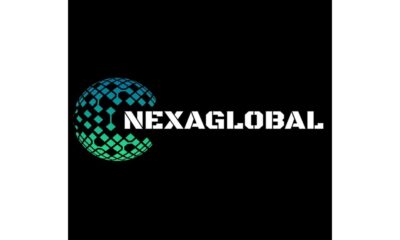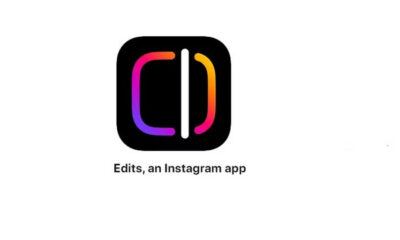Business
Everything You Need to Know about SEP-IRA: Complete Guide

A retirement plan called a Simplified Employee Pension IRA (SEP-IRA) is intended for self-employed individuals or small business owners. It enables the employer to contribute to their employees’ retirement plans as well as their own.
Employers can deduct all of their contributions from their taxable income by setting up a SEP-IRA. The funds grow in the account tax-deferred until they take withdrawals. For people seeking a retirement plan with little administrative work, the plan is a desirable alternative because it is simple to set up and keep up.
How does a Simplified Employee Pension (SEP) work?
SEP-IRAs and Simplified Employee Pensions (SEPs) are equivalent in every way. This is so because each participant’s (employee’s) SEP-IRA is where SEPs are always set up.
For every qualified employee, you as their employer contribute pre-tax money to a Simplified Employee Pension plan. You can select the financial institution to handle the SEP-IRAs. The money that is invested in each participant’s account is completely under their control.
Important: You are both an employer and an employee when using SEP. Companies don’t possess a SEP. Employees alone do.
The financial institution that oversees your SEP-IRA plan’s offerings determines how your employees will invest the contributions you make on their behalf. This usually refers to a restricted quantity of individual stocks and bonds, mutual funds, and exchange-traded funds (ETFs). Every person’s account increases tax-deferred. Participants can begin taking money out at age 59½, but they will have to pay taxes on those withdrawals. Usually, there are fines and taxes associated with early withdrawals.
SEP-IRA contribution limits
The Internal Revenue Service’s (IRS) computation of the cost-of-living adjustment (COLA) determines the annual contribution limits for Simplified Employee Pension (SEP) IRAs.
Contributions to an employee’s SEP-IRA in 2024 cannot be more than the lower of:
25% of the worker’s salary, or $69,000
Note: SEP plans do not allow catch-up contributions or optional salary deferrals.
You have until your tax-filing deadline, including extensions, to make contributions to a SEP-IRA for the current year.
SEP-IRA rules
Employers and employees are required to abide by several rules regarding the Simplified Employee Pension (SEP) IRA, which include:
- Eligibility: Generally speaking, employers are required to enroll all workers who are at least 21 years old, have been employed by them for three of the previous five years, and have made at least $750 in pay in a single year in the plan.
- Contribution limits: Up to a specific annual salary cap, the employer may contribute up to 25% of the employee’s pay. The maximum compensation limit is $345k, and the maximum contribution limit is $69,000 for 2024.
- Vesting: All contributions made to the SEP-IRA in the name of the employee become immediately vested, giving them complete ownership and control over the funds.
- Withdrawals: Similar regulations and penalties apply to withdrawals from a SEP-IRA as they do to traditional IRA withdrawals.
- Withdrawals before the age of 59½ are typically subject to income taxes plus a 10% penalty.
- Minimum distributions that are required (RMDs): Employees must begin taking required minimum distributions (RMDs) from their SEP-IRA by April 1 of the year that follows the year that they turn 72 (73 if they turn 72 after December 31, 2022). The employer is not required to make RMDs from the SEP-IRA plan.
SEP-IRA regulations can change based on the particular plan and employer, so it’s a good idea to speak with a financial advisor or tax expert to make sure you’re following your plan’s rules.
SEP-IRA: Pros and cons
When determining whether a SEP-IRA is the best retirement plan for their needs, employers and employees should weigh its many benefits and drawbacks. If you are thinking about opening a SEP-IRA, here are some benefits and drawbacks to consider:
Pros:
- Adaptable contributions
- Tax-deductible contributions (unless it’s a Roth)
- High contribution limits
- Simple to set up and maintain
Cons:
- No catch-up contributions
- Equal rate contributions required
- May have no Roth option
- Limited investment options
Advantages
- Flexible contributions: SEP-IRAs are especially helpful for businesses or independent contractors whose revenue is subject to fluctuations, such as good and bad years. Employers can make bigger contributions with a SEP-IRA in prosperous times and smaller ones in lean times.
- All eligible employees must, however, receive the same contribution rate from the employer.
- Contributions that are tax deductible: Employers may lower the taxable income of qualified employees by making tax-deductible contributions to the SEP-IRA.
- High contribution limits: A SEP-IRA is a great option for people who want to save a sizable sum for retirement. For 2024, the contribution limit is $69,000 or 25% of the employee’s compensation, whichever is less.
- Simple to set up and maintain: Because a SEP-IRA does not require complicated annual filings or reporting requirements, it is simple to set up and maintain.
Disadvantages
- No catch-up contributions: SEP-IRA contributions are normally capped at a portion of the employee’s salary; employees 50 years of age or older are not eligible to make any additional catch-up contributions.
- The tax-deductible catch-up contribution cap of $7,000 ($8,000 if you’re 50 or older) may be available to you in 2024 if your plan permits you to transfer traditional IRA funds to your SEP-IRA.
- Contributions at the same rate are needed: If an employee contributes to their own SEP, employers must make an annual contribution to the eligible employees’ SEP-IRA accounts. In addition, all employees must contribute at the same rate.
- Possibly lacking a Roth option: Traditionally, a SEP-IRA has not provided a Roth option; as a result, all contributions and earnings are only taxed at the time of withdrawal. This is so because, as a result of the SECURE 2.0 Act, the tax-free withdrawal Roth option was limited to SIMPLE and SEP-IRAAs beginning in 2023.
- The employee’s income for the year of the contribution will include any Roth contributions.
- Limited investment options: Depending on the financial institution holding the account, the employee may only have a limited number of options for investments in the SEP-IRA.
How do I open a SEP-IRA?
It’s easy to open a Simplified Employee Pension (SEP) IRA. To open a SEP-IRA as a self-employed person or as an employer, follow these steps:
- Select a financial institution: Selecting an institution that provides SEP-IRA accounts is the first step. A bank, brokerage house, mutual fund company, or another type of financial institution could be it. Comparing costs, investment options, and customer support is crucial when selecting a financial institution.
- Fill out the application: To open a SEP-IRA account, you must fill out an application after deciding on a financial institution. Usually, this entails giving details about your name, address, Social Security number, and business tax identification number, among other personal and business data.
- Plan setup: The financial institution will give you the paperwork to set up the SEP-IRA plan once you have finished the application. A plan document, adoption agreement, and other necessary paperwork might be included in this.
- Establish the eligibility of the employee: If you have employees, you will need to decide which of them, subject to certain requirements like age and length of service, can (and must) participate in the SEP-IRA plan.
- Contributions: You can fund eligible employees’ SEP-IRA accounts after setting up the plan and establishing their eligibility. Up to a predetermined annual cap, you may contribute up to 25% of the employee’s pay.
How do I invest in my SEP-IRA?
Investing in an IRA of any kind is comparable to investing in a SEP-IRA. As an employee, you can take the following actions:
Select a financial approach
Selecting an investment plan that fits your risk tolerance and retirement goals is the first step. The financial institution managing the plan offers a range of investment options, including mutual funds, ETFs, stocks, bonds, and target-date funds.
Choose your investments
Choose the investments you want to keep in your SEP-IRA account after deciding on an investment plan. This could entail examining various mutual funds, exchange-traded funds (ETFs), or individual stocks and bonds while taking risk, fees, and investment performance into account. Remember that the SEP plan will restrict the types of investments you can make.
Monitor investments
It’s essential to keep an eye on your SEP-IRA investments to make sure they complement your retirement goals and investing strategy. Periodically rebalance your portfolio by adding new investments or selling underperforming ones.
If you’re not comfortable handling your investments, you might want to think about working with a financial advisor or other investment specialist who can manage your portfolio, help you make investment decisions, and help you select investments that fit your goals.
What is the difference between a SEP-IRA and other retirement investment options?
Retirement investment options vary greatly, but they also share many commonalities. What you should know is as follows.
SEP-IRA vs. Roth IRA
- Tax treatment: A SEP-IRA is a tax-deferred retirement account, which means that until the money is withdrawn, contributions are tax-deductible in the year they are made. Another tax-advantaged option is a Roth IRA, where contributions are made with after-tax money and withdrawals are not taxed. Earnings accrue tax-free. Starting in 2023, SEP-IRAs may now have a Roth option under SECURE 2.0. It will be treated tax-wise similarly to a Roth IRA.
- Contribution limits: Compared to Roth IRAs, SEP-IRA contribution caps are typically higher. The SEP-IRA contribution cap for 2024 is $69,000 or 25% of the employee’s salary, whichever is lower. The 2024 Roth IRA contribution cap is $7,000 for individuals under the age of fifty. Anyone over 50 may fund a Roth IRA with up to $8,000 in contributions.
- Eligibility: Employees, small business owners, and independent contractors can typically open SEP-IRAs. Anyone who satisfies certain income requirements can open a Roth IRA.
- Contributions from the employer: Employers can give qualified workers tax-deductible contributions through SEP-IRAs. You cannot make employer contributions to a Roth IRA.
- Required minimum distributions (RMDs): Account holders of SEP-IRAs must begin taking RMDs at age 72 (or 73 if they turn 72 after December 31, 2022). RMDs are not necessary for Roth IRAs while the original account holder is alive.
SEP-IRA vs. SIMPLE IRA
- Source of Contribution: Employers are the only ones who can make contributions to SEP-IRAs. Employers and employees may both make contributions to SIMPLE IRAs.
- Contribution limits: The annual maximum for SEP-IRA contributions as of 2024 is $69,000, or 25% of each employee’s salary, whichever is less. The yearly contribution cap for SIMPLE IRAs is $16,000 for each employee, plus an additional $3,500 for individuals 50 years of age and above.
- Contributions for matching: Employers are required to contribute 2% of their employees’ contributions, or up to 3% of their contributions, to SIMPLE IRAs. For those plans, this requirement does not apply because employees do not contribute to a SEP-IRA.
- Penalties and restrictions: Withdrawals made before the age of 59½ from SEP-IRAs are subject to a 10% penalty. By age 72 (73 if they reach age 72 after December 31, 2022) distributions must begin. Also, there is a 10% penalty for withdrawals made from a SIMPLE IRA before the age of 59½ and a 25% penalty if the account has been open for less than two years.
SEP-IRA vs. individual 401(k)
- Contribution limits: The maximum contribution to a SEP-IRA is set at $69,000 in 2024, or 25% of the employee’s income, whichever is lower. The maximum contribution amount for an Individual (Solo) 401(k) is $23,000 in 2024, or $30,500 if you’re 50 years of age or older.
- Eligibility: Small business owners with any number of employees as well as independent contractors are eligible for SEP-IRAs. The only people eligible for individual 401(k)s are self-employed people and business owners who only have their spouses as employees.
- Source of contribution: Only employer contributions are permitted in SEP-IRAs. Self-employed people who also work a side job as employees can benefit from the ability for both employers and employees to contribute to an individual 401(k).
- Investment options: Generally speaking, a SEP-IRA provides a small range of options. There is typically a greater selection of mutual funds, ETFs, stocks, and bonds in an individual 401(k).
- Required contributions: Unlike SEP-IRAs, which are exempt from this requirement, individual 401(k) plans demand contributions from the employer based on a percentage of income. The employer’s contribution to an individual 401(k) must be a set percentage of the employee’s income or a set amount, whichever is lower.
SEP-IRA vs. traditional IRA vs. Roth IRA
- Eligibility: Small business owners and independent contractors are eligible to open SEP-IRAs. Anybody with an income can open a traditional or Roth IRA.
- Source of Contribution: All contributions to a SEP-IRA are made by the employer. All contributions to a traditional or Roth IRA are made by employees.
- Contribution limits: Under SEP-IRA regulations, an employer may contribute a maximum of $69,000 for 2024, or 25% of an employee’s income. An employee’s maximum contribution to a traditional or Roth IRA in 2024 is $7,000, or $8,000 if they are 50 years of age or older.
- Tax treatment: Pre-tax contributions to both traditional and SEP-IRAs grow tax-deferred until they are withdrawn at age 59½. Taxes are deducted from the amount taken out. Post-tax contributions are made to a Roth IRA.
Easy setup and flexible contribution options are provided by SEP-IRAs
Small business owners and independent contractors can contribute to an easy-to-maintain retirement savings account with a SEP-IRA. To prevent fines and unfavorable tax results, business owners and employees using SEP-IRAs must closely adhere to all IRS regulations.
This retirement account is especially useful for people who want to save more money for retirement than a regular or Roth IRA will allow them to in a given year. Employers who have variable income should not worry about not being able to support their SEP plan in lean times because they are not required to make annual contributions.
-

 Business3 weeks ago
Business3 weeks agoPrakash and Kamal Hinduja: Driving Social and Environmental Change
-
Education4 weeks ago
Fred DuVal: University Leadership as a Critical Resource for Climate Change Research and Life-Saving Solutions
-

 Health3 weeks ago
Health3 weeks agoThe Hinduja Brothers Commitment to Global Health: Empowering Communities Across Borders
-

 Cryptocurrency3 weeks ago
Cryptocurrency3 weeks agoDesigned For The Masses: How Akasha (AK1111) Is Unlocking Crypto For The Next Billion Users
-

 Cryptocurrency4 weeks ago
Cryptocurrency4 weeks agoNexaglobal & Future World Token (FWT): Could This Be the Next Big Crypto Investment of 2025?
-

 Sports4 weeks ago
Sports4 weeks agoWomen’s NCAA Tournament 2025 Sweet 16: Full Schedule, Fixtures, Teams, Bracket, and How to Watch March Madness Basketball Match Live
-

 Startup1 week ago
Startup1 week agoCost-Saving Strategies Every Small Business Owner Should Know to Boost Efficiency
-

 Startup3 weeks ago
Startup3 weeks agoMatthew Denegre on the Art of Deal Sourcing: Finding the Right Investment Opportunities

















